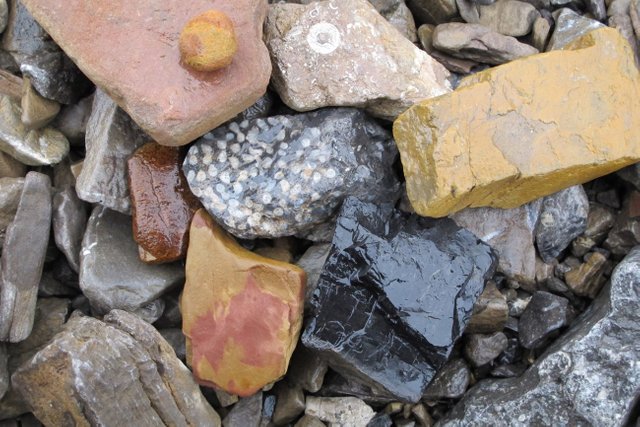
The Earth beneath our feet is a complex and dynamic world waiting to be explored. Geology, the scientific study of the Earth's structure, composition, and processes, offers us a window into the planet's history and the forces that have shaped it. In this comprehensive guide, we embark on a journey to understand the fascinating realm of rocks, minerals, and the broader field of geology. In this article we also going to know about How to Clean Algae From Aquarium Rocks
I. The Building Blocks: Rocks and Minerals
At the core of geology lies the study of rocks and minerals, which serve as the Earth's building blocks. Let's begin by understanding the fundamental differences between these two entities:
Rocks: Rocks are naturally occurring aggregates of minerals, mineraloids, or organic materials. They can be classified into three major types: igneous, sedimentary, and metamorphic. Each type provides a unique glimpse into Earth's geological history.
Igneous Rocks: Formed from molten magma, igneous rocks like granite and basalt tell tales of volcanic eruptions and the cooling of Earth's fiery core.
Sedimentary Rocks: Comprised of sediment particles, sedimentary rocks such as sandstone and limestone offer insights into ancient environments, fossils, and the passage of time.
Metamorphic Rocks: The result of extreme heat and pressure on existing rocks, metamorphic rocks like marble and schist reveal the Earth's dynamic processes and tectonic activity.
Minerals: Minerals are naturally occurring, inorganic solids with a defined chemical composition and crystalline structure. They are the basic building blocks of rocks and come in a stunning array of forms and colors. Examples include quartz, feldspar, and calcite.
II. Unearthing Earth's History
Geologists are like detectives, deciphering the Earth's history through the clues left in rocks and minerals. By studying rock layers, fossils, and the distribution of minerals, they can piece together the puzzle of Earth's geological past.
Stratigraphy: The study of rock layers, or stratigraphy, helps geologists unravel the Earth's history. Each layer represents a different time period, and fossils found within these layers offer insights into the life forms that once inhabited the planet.
Radiometric Dating: To determine the age of rocks and minerals, geologists employ radiometric dating techniques. By measuring the decay of radioactive isotopes within these materials, scientists can establish precise timelines spanning billions of years.
III. Practical Applications
The field of geology extends beyond academic curiosity; it has numerous practical applications in our daily lives:
Natural Resource Exploration: Geologists play a crucial role in locating and assessing valuable resources such as minerals, oil, and natural gas.
Environmental Protection: Geologists help monitor and manage natural hazards, including earthquakes, volcanic eruptions, and landslides.
Construction and Infrastructure: The knowledge of geological conditions is essential for building safe and resilient structures and transportation networks.
IV. The Art of Rock and Mineral Collecting
Many individuals find joy in collecting rocks and minerals for their beauty, rarity, or scientific value. Rockhounds, as enthusiasts are often called, explore the world to find these treasures, which can range from dazzling gemstones to stunning mineral specimens.
V. The Ongoing Journey
Geology is a dynamic field that continues to evolve. As our understanding of Earth's processes deepens, so does our appreciation for the planet's geological wonders. The study of rocks, minerals, and geology as a whole is a never-ending journey of discovery, offering new insights and revelations with each passing day.
Conclusion
"Rocks, Minerals, and Beyond: A Comprehensive Guide to Geology" has taken us on a journey through the heart of our planet, where rocks and minerals tell stories of ancient landscapes, cataclysmic events, and the enduring beauty of Earth's geological wonders. Whether you're a budding geologist, a passionate collector, or simply curious about the world beneath your feet, the world of geology invites you to embark on a lifelong exploration of Earth's rich and intricate history.